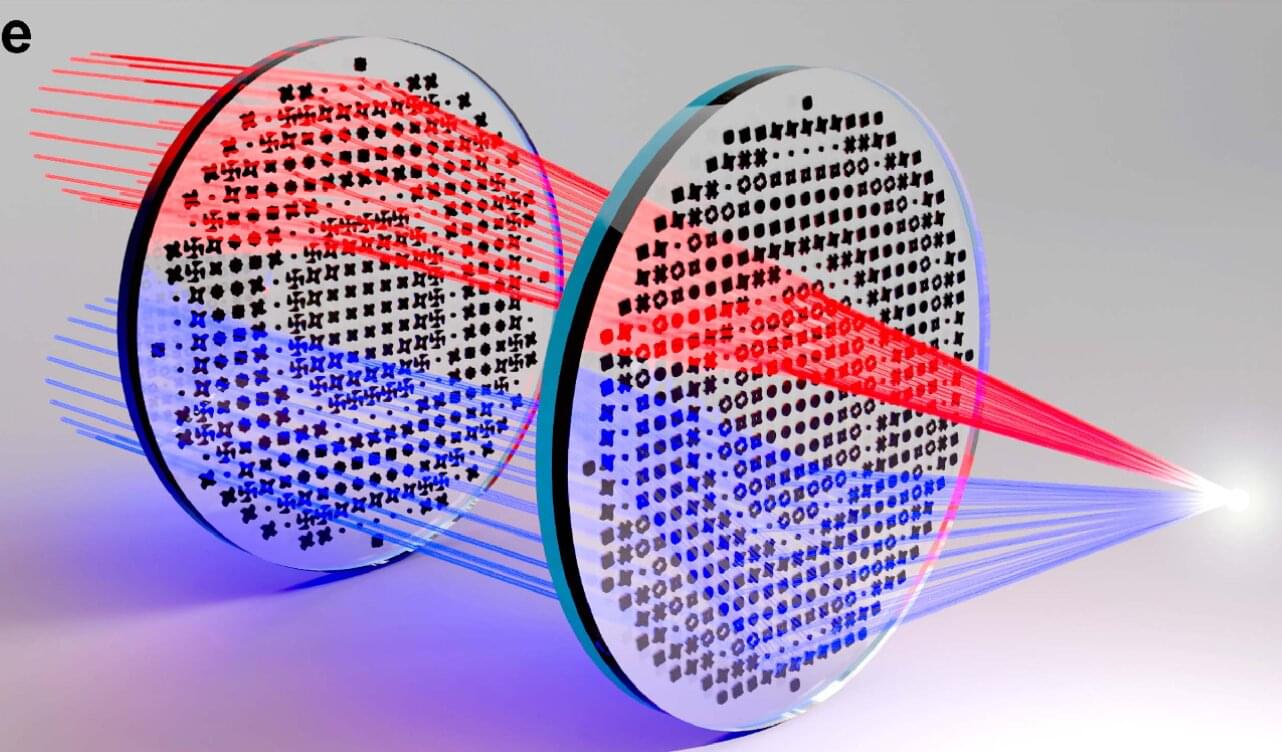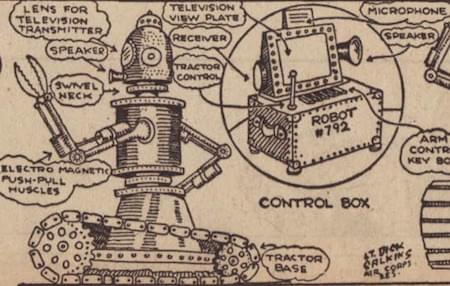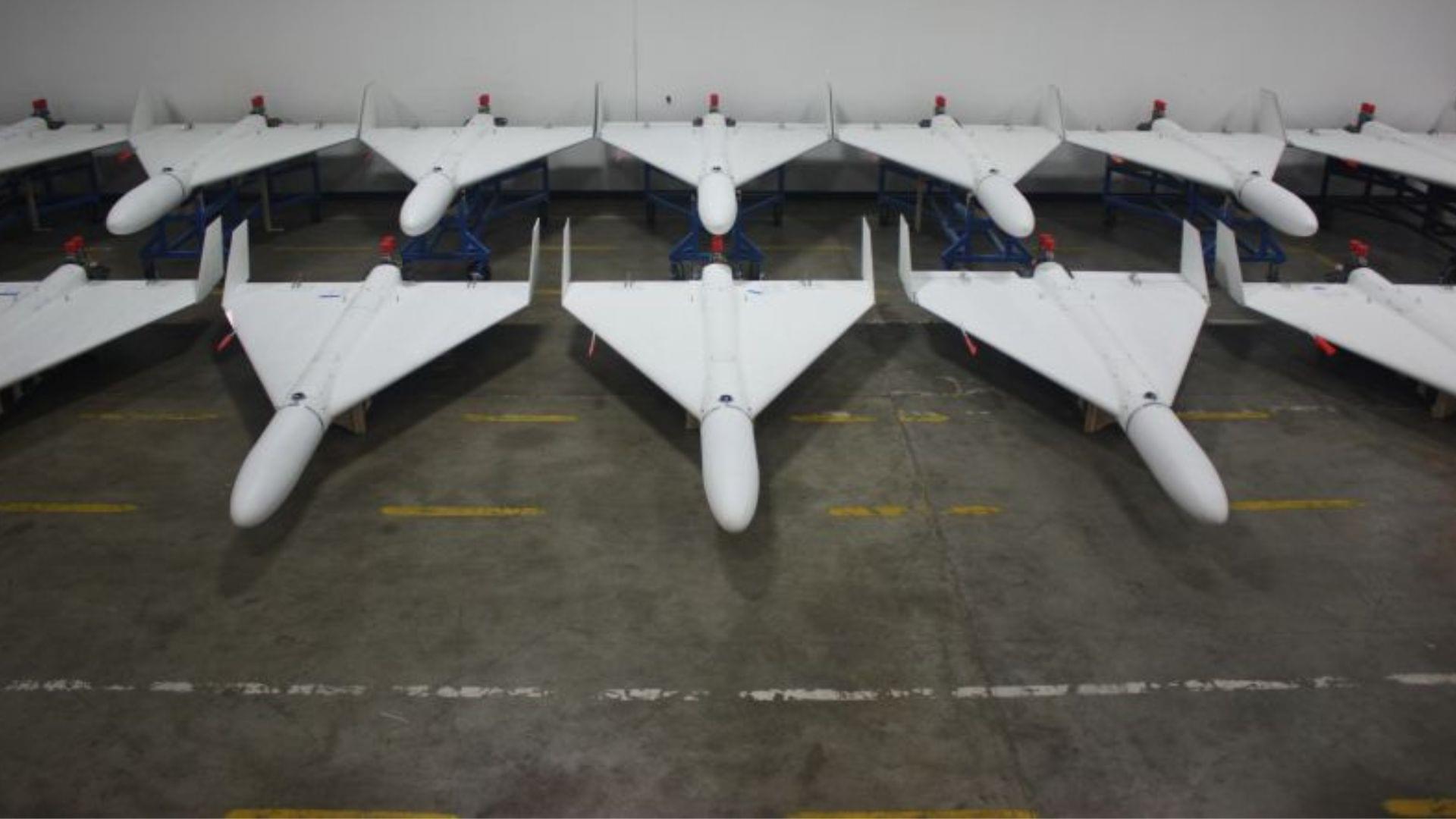The lightweight tech is custom-made, with drones swapping in and out seamlessly to create halos of light—and the hand of God.



A new approach to manufacturing multicolor lenses could inspire a new generation of tiny, cheap, and powerful optics for portable devices such as phones and drones.
The design uses layers of metamaterials to simultaneously focus a range of wavelengths from an unpolarized source and over a large diameter, overcoming a major limitation of metalenses, said the first author of the paper reporting the design, Joshua Jordaan, from the Research School of Physics at the Australian National University and the ARC Center of Excellence for Transformative Meta-Optical Systems (TMOS).
“Our design has a lot of nice features that make it applicable to practical devices.”
Report.
A closer look at one widely shared online image shows the vessel dwarfing a four-lane road in Beijing, implying that it likely stretches more than 15 meters (49 feet) in length. Its size, combined with the angular, stealth-oriented design and cockpit windows, indicates that the craft could accommodate either sophisticated onboard equipment or a small crew.
Preparations for a massive military parade in the capital are in full swing as the country readies to mark the 80th anniversary of the end of World War II, celebrated as Victory Day. The third major rehearsal ran from 5 p.m. Saturday to 5 a.m. Sunday in Tiananmen Square, state news agency Xinhua reported.
The uncrewed surface vehicle featured in China’s official military parade indicates it has already entered active service. The vessel is significantly smaller than the “Killer Whale” a larger surface stealth drone that was unveiled at the Zhuhai Airshow last year, the South China Morning Post reported.

Questions to inspire discussion.
🤖 Q: What is Tesla’s vision for autonomous vehicles? A: Tesla is prioritizing a robo taxi future with Cybercab and potentially Robovan, likely to focus on producing robo vehicles over traditional cars in the near future.
📊 Q: How does the Model Y L fit into Tesla’s robotaxi plans? A: The Model Y L would be a good fit for the robo taxi network, offering a bigger car with more versatility that people want, even if they don’t need the space, and would be a hot seller in the US market.
Tesla’s Full Self-Driving Progress.
🚀 Q: How close is Tesla to achieving full self-driving? A: With version 14 of FSD almost complete and version 15 likely to be the final needed version within a year, Tesla is expected to fully commit to the robo taxi future.
🏢 Q: How has Tesla’s leadership approached the robotaxi strategy? A: Tesla’s executives previously resisted Elon Musk’s push to bet the company on robo taxis, but are now likely to fully commit given the progress in FSD development.

The remotely-operated robot tank is an old idea…’
Unmanned Boats Attack At Sea ‘The autofreighter smashed into the boat…’
Iron Drone Raider Counter-UAV Operations ‘You’ve got an aggressive machine up in the air now.’ — Robert Sheckley, 1953.
Bunker Busters and Bore-Pellets ‘The first revelation of the new Soviet bore-pellets.’ — Philip K. Dick, 1955.


US firm unveils Iran’s Shahed-style kamikaze drone with 100-pound payload power.
Alabama-based drone manufacturer Griffon Aerospace has unveiled its latest unmanned aircraft system, the MQM-172 Arrowhead, a drone designed to operate as both a high-performance target platform and a configurable strike asset.
Daniel Beck, Airworthiness Manager and Program Manager at Griffon Aerospace, said in a social media statement that the Arrowhead is developed to provide customers with a flexible, dual-role system that can adapt to changing mission demands.
Questions to inspire discussion.
🚗 Q: How will AI6 be used in Tesla vehicles? A: AI6 will be used for FSD inference, with two chips in every car, enabling advanced autonomous driving capabilities.
🤖 Q: What role will AI6 play in Optimus? A: AI6 will enable on-device learning and reinforced learning in Optimus, enhancing its AI capabilities.
🔋 Q: Will AI6 be used in other Tesla products? A: AI6 will be integrated into every edge device produced by Tesla, including Tesla Semi, Mega Pack, and security cameras.
Technical Specifications.
💻 Q: What is the architecture of AI6? A: AI6 will use a cluster model of individual chips with a software layer on top, similar to Dojo 3 for training.
The People’s Liberation Army has released rare footage showing its reconnaissance drones tracking a ‘hostile warship,’ highlighting China’s increasing integration of unmanned systems with intelligence operations.
The video, aired in Forging Ahead, the PLA’s latest military documentary, depicts a coordinated mission involving the WZ-7 and WZ-10 unmanned aerial vehicles. Both are high-altitude, long-endurance platforms built by the Aviation Industry Corp (AVIC) of China for surveillance missions.